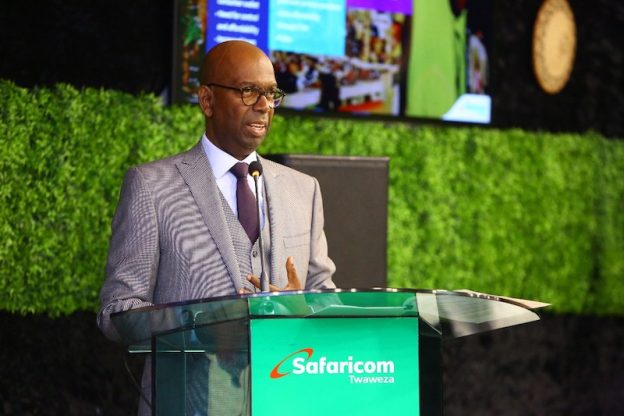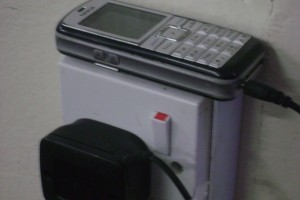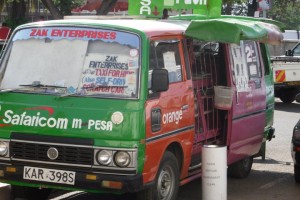Safaricom announced another year of record earnings through innovation and payments, despite a tough economy in Kenya and with an extra bonus for their shareholders.
For 2018, Safaricom recorded revenue of Kshs 240.3 billion (~$2.4 billion), an increase of 7%, and a net profit of Kshs 63.9 billion. The growth was attributed to M-Pesa which, grew by 19% to Kshs 75 billion, and which accounted for 75% of the revenue growth in the year. They also reported that there were 22.6 million active M-Pesa customers and these customers made an average of 12.2 transactions a month, up from 7.4 transactions a month, three years ago.
Chairman Nicholas Ng’ang’a said it had been a challenging year with constrained credit (from bank interest rate caps) and inflation limiting discretionary income while the government had added taxes on mobile transactions Unlike last year‘s event where the company had earnings before interest guidance of Kshs 89.6 billion, this year CEO Bob Collymore was present at the Friday morning investor briefing at the company’s headquarters complex in Nairobi where he announced that he was proud that the company had achieved an EBITDA of 50% which was unprecedented in the mobile world.
Ng’ang’a announced that the company would have to look for growth elsewhere beyond Kenya, while Collymore said this could be by taking charge of the M-Pesa brand from Vodafone and leading the expansion across Africa with new shareholder Vodacom and he cited new M-Pesa global partnerships that Safaricom had signed with PayPal, Google (play store) Western Union and AliExpress.
This year the company rolled out Fuliza, the world’s first mobile phone overdraft that has seen over Kshs 45 billion borrowed so far. In terms of banks, Collymore said the era of competing with them was now over, and there would be more collaboration. Last week, Safaricom renewed a partnership with Equity Bank that will aim to improve financial inclusivity, cash management and security.
From the 2018 results, Safaricom will pay shareholders Kshs 1.25 per share, an amount totalling Kshs 50 billion. They will also, for a second time since listing, pay a special bonus dividend of Kshs 0.62 per share – totaling Kshs 24.84 billion.
EDIT: April 6, 2020: Safaricom and Vodacom announced that they have completed the acquisition of the M-Pesa brand, product development and support services from Vodafone through a newly-created joint venture.
.. M-Pesa is the largest payments platform on the African continent, it has 40 million users and processes over a billion transactions every month. M-PESA is operational in Kenya, Tanzania, Lesotho, the Democratic Republic of Congo, Ghana, Mozambique and Egypt.
.. The disposal of the M-PESA brand, support and product development services to Vodacom and Safaricom is broadly financially neutral for Vodafone Group.



